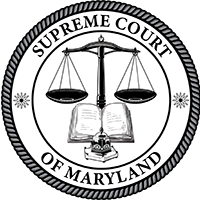Tennessee Supreme Court

Judicial selection
Penny J. White was appointed by Governor Ned McWherter in 1994 to the Tennessee Supreme Court. [16] She was the second woman ever to serve on the state's highest court. [17] Her appointment filled the seat of retired Justice Charles O'Brien. [16] [3] The Tennessee Supreme Court has five justice who are selected through assisted appointment. [16] Penny J. White was confirmed by the Tennessee General Assembly to serve on the Tennessee Supreme Court as the second woman justice after Justice Daughtrey who encouraged White to fill Justice O'Brien's seat. [2] [16] [3] Besides White,the other candidates to fill the spot on the bench were Justice Holder and Chancellor Richard Ladd. Justice White served on the bench alongside Chief Justice Riley Anderson,Chief Justice Adolpho Birch,Justice Frank Drowota,and Justice Lyle Reid.
Published court opinions
Penny J. White wrote about 200 reported and unreported court opinions as a judge between 1992 and 1996. The following list are some of the Tennessee Supreme Court opinions authored by Justice White.
- McClellan v. Board of Regents,921 S.W.2d 684 (Tenn. 1996). [18]
- McClung v. Delta Square Ltd. Parnership,937 S.W.2d 891 (Tenn. 1997). [19]
- Meighan v. U.S. Sprint Co.,942 S.W.2d 476 (Tenn. 1997). [20]
- Phipps v. State,883 S.W.2d 138 (Tenn. 1994). [21]
- Ramsey v. Beavers,931 S.W.2d 527 (Tenn. 1996). [22]
- Ray,by Hoilman v. BIC Corp.,931 S.W.2d 527 (Tenn. 1996). [23]
- Wimley v. Rudolph,931 S.W.2d 513 (Tenn. 1996). [24]
McClellan v. Board challenged the procedural and substantive processes under the Uniform Administration Procedures Act. [18] McClellan was found guilty of sexual harassment during his teaching in the Department of Health,Physical Education,and Recreation at Middle Tennessee State University. The Court of Appeals and the Tennessee Supreme Court upheld this ruling. [18] The Supreme Court found that substantial and material evidence supports finding a violation of sexual harassment policy of the Tennessee State Board of Regents and of Middle Tennessee State University. [18] Another issue addressed in McClellan is whether the administrative hearing had appropriate procudures. [18] The Supreme Court reversed the lower court's decision that vacated one of the hearing findings and the sanction order. The Supreme Court remanded the case so the sanctions were reviewed in the administrative trial. [18]
McClung v. Delta Square Ltd. Partnership changed the precedent for liability cases for acts violence committed by third parties against victims. [3] A victim of abduction from a Wal-Mart parking lot,Dorothy McClung was raped and murdered by Joseph Harper. [19] McClung's husband,the plaintiff,sought relief from the defendants,owners,operators,and tenants for negligence of not providing parking lot security. [19] This case decided that "the question of duty and of whether defendants have breached that duty by taking or not taking certain actions is one for the jury to determine based upon proof presented at trial." [19] This decision reversed a precedent that limited the care for security that business owners should owe to customers. [19] In White's oral history with the Tennessee Supreme Court Historical Society,this was the only case she mentioned by name. [3]
Meighan v. U.S. Sprint Co. reviewed the Tennessee Rules of Civil Procedure,specifically Rule 23. [20] The Court reviewed Rule 23 in its application to actions that cause injury to property in deciding the potential reasons for action and the adequate amount of damages caused by the action. [20] The Court denied a rehearing. [20]
In Phipps v. State,the state of Tennessee tried defendant David Willard Phipps,Jr. for first degree murder. [21] Tennessee did not charge the death penalty. The trial jury found Phipps guilty sentencing him to life imprisonment. [21] The Court of Criminal Appeals reversed the defendant's conviction which remanded a new trial. [21] The Tennessee Supreme Court reviewed the State's decision as the plaintiff in pursuing the death penalty after it was not previously pursued. [21] The Court found that the state was not exhibiting prosecutorial vindictiveness against Phipps,and the State was allowed to pursue the death penalty in the trial. [21]
In Ramsey v. Beavers,the Court reviewed the issue of the viability of the zone danger test which limited the liability of a defendant when a plaintiff has not been physically injured yet but injury is possible. [22] The plaintiff,Ramsey,and his mother were parked when his mother exited the vehicle to check the mailbox. [22] Defendant Beavers hit Ramsey's mother. Ramsey recounted that tire screeching could be heard from Beaver's car as he witnessed the vehicular accident. [22] The defendant's motion explained that because the plaintiff was not in the immediate threat of physical harm,or the zone of danger,he could not claim relief for the injuries claimed. [22] The Court ruled that in cases where the injury and resulting death is sensorily observed recovery should be allowed for the emotional injuries. [22]
Ray v. Hoilman was a case about the defendant's counsel not receiving all of the information from the discovery and requesting to continue with the trial and all associated deadlines. [23] The Court concluded that without a continuance motion,there would not be reasonable time to prepare for trial for the defense counsel even with due diligence. [23]
Wimley v. Rudolph addressed the issue of whether a plaintiff add a petition for judicial review with an original action under 42 U.S.C. §1983 under the Uniform Administration Procedures Act if the sole relief requested in the Section 1983 claim is an award of attorney fees. [24] The plaintiff was a benefits recipient of Aid for Dependent Children. [24] After the plaintiff received for uncle's estate inheritance,the Department of Human services told her that the benefits would not be affected. [24] Wimley v. Rudolph affirmed the Court of Appeals' decision which allowed the plaintiff an attorney fees award. [24]









